Testo di Enrico Nardi
2017: da sei anni la Siria è sotto il fuoco di una guerra devastante, che coinvolge l’intero scacchiere geopolitico mondiale e gli equilibri interni del Medioriente. Il governo di Assad, Stati Uniti, Russia, Iran, ISIS sono solo alcuni degli attori presenti in un conflitto che ha causato più di 350 mila morti (di cui poco meno di un terzo civili) e ha provocato la fuga di più di cinque milioni di persone.
Come spesso accade, i paesi limitrofi sono quelli che accolgono più emigrati. Questo conflitto non fa eccezione: Turchia, Libano e Giordania hanno accolto più del 90% dei profughi dal 2011 ad oggi. In Libano ci sono 200 rifugiati ogni mille abitanti; in Giordania il rapporto è di 100 a mille; l’Italia, per fare un paragone, accoglie un numero di migranti che è il 2,4 per mille del numero degli abitanti.
La Giordania, che confina a sud con la Siria, è per tradizione un paese ospitale. Dal secondo dopoguerra questo piccolo regno ha dato rifugio a profughi palestinesi, egiziani, iracheni; adesso anche ai siriani.
Mafraq dista poco più di 15 chilometri dal confine siriano, le guide turistiche la definiscono una “polverosa e congestionata città di frontiera”. A tredici chilometri sorge l’immenso campo profughi di Zaatari, aperto nel 2011 e diventato una città di ottantamila abitanti. Dal campo sono passate nel tempo tante famiglie, tante persone che hanno trovato poi una migliore sistemazione a Mafraq.
Prima che lo Stato giordano, insieme dalle associazioni umanitarie, attivasse la sua rete di aiuti, i profughi sono stati supportati dai vicini di casa, che davano loro da mangiare, oppure medicine, oppure pannolini per i neonati.
Il progetto nasce con l’obiettivo di raccontare le storie di fuga e di accoglienza di alcune di queste famiglie. Le loro testimonianze ci regalano un punto di vista reale di cosa sia stata la Primavera Araba, la guerra, le contraddizioni che un conflitto di tali dimensioni si porta sempre dietro. E di cosa sia l’accoglienza in un paese, la Giordania, che ha visto arrivare dal 2011 670 mila emigrati siriani; un paese dove, però, la lingua, la cultura e la religione sono patrimoni comuni a entrambe le popolazioni.
Yahia, Fatima, Ahmed, Ibrahim, Sali e Hassna ci hanno aperto le loro abitazioni per condividere l’esperienza dell’esilio e delle nuove vite che si sono dovuti costruire.
Tra Mafraq e la loro vera casa ci sono pochi chilometri, ma nel mezzo si alza un confine invalicabile. Quale sarà il loro futuro? E con quali occhi, con quali speranze lo stanno aspettando?
—————————————————————————————————————————————
2017: for six years Syria has been under the fire of a devastating war, which involves the entire world geopolitical chessboard and the internal equilibrium of the Middle East. The government of Assad, United States, Russia, Iran, ISIS are just some of the actors present in a conflict that has caused more than 350 thousand deaths (of which just under one third civilians) and has caused the escape of more than five million of people.
As often happens, the neighboring countries are those that receive more emigrants. This conflict is no exception: Turkey, Lebanon and Jordan have welcomed more than 90% of refugees from 2011 to today. In Lebanon there are 200 refugees per thousand inhabitants; in Jordan the ratio is 100 to one thousand; Italy, to make a comparison, welcomes a number of migrants that is 2.4 per thousand of the number of inhabitants.
Jordan, which borders south with Syria, is traditionally a hospitable country. Since the Second World War, this small kingdom has given refuge to Palestinian, Egyptian and Iraqi refugees; now also to the Syrians.
Mafraq is just over 15 kilometers from the Syrian border, the tourist guides call it a “dusty and congested border town”. At thirteen kilometers, the immense refugee camp of Zaatari, opened in 2011 and became a city of eighty thousand inhabitants. Many families, many people who have found a better accommodation in Mafraq have passed through the camp.
Before the Jordanian state, together with humanitarian associations, activated its network of aid, the refugees were supported by neighbors, who gave them food, or medicines, or diapers for newborns.
The project was born with the aim of telling the stories of escape and reception of some of these families. Their testimonies give us a real point of view of what was the Arab Spring, the war, the contradictions that a conflict of such dimensions always carries with it. And what is the reception in a country, Jordan, which saw from 2011 670 thousand Syrian emigrants arrive; a country where, however, language, culture and religion are common patrimony to both populations.
Yahia, Fatima, Ahmed, Ibrahim, Sali and Hassna opened their homes to share the experience of exile and the new lives that had to be built.
There are only a few kilometers between Mafraq and their true home, but an impassable border rises in the middle. What will their future be? And with what eyes, with what hopes are they waiting for him?
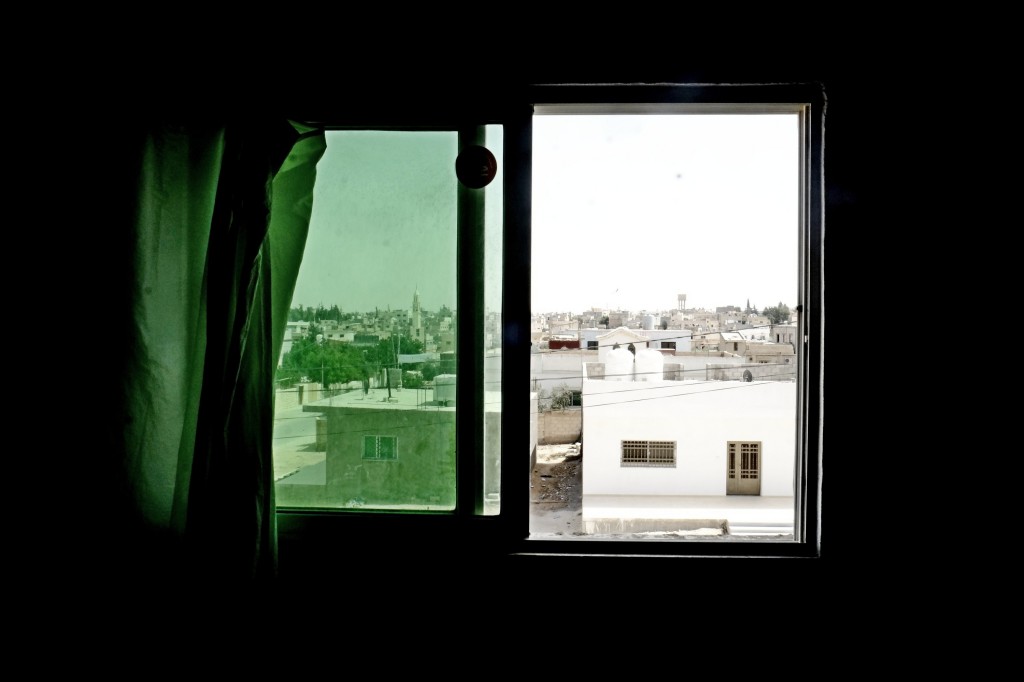
Vista di Mafraq da una finestra della casa di Sali

Figlia di Yahia. Yahia 39 anni, vive insieme ai suoi cinque figli; la moglie è in attesa del sesto

Nipote di Yaha in salotto

Abdelatif viene da Homs, dove lavorava come tassista; adesso una malattia gli impedisce di lavorare
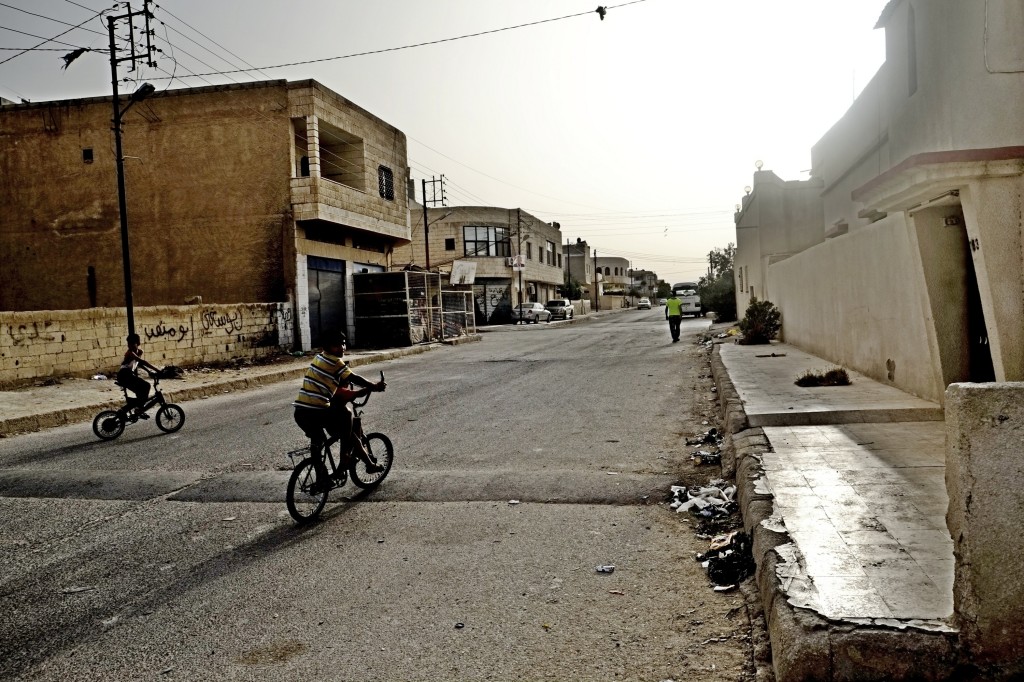
Strada di Mafraq

Figlia di Abdelatif mentre riposa
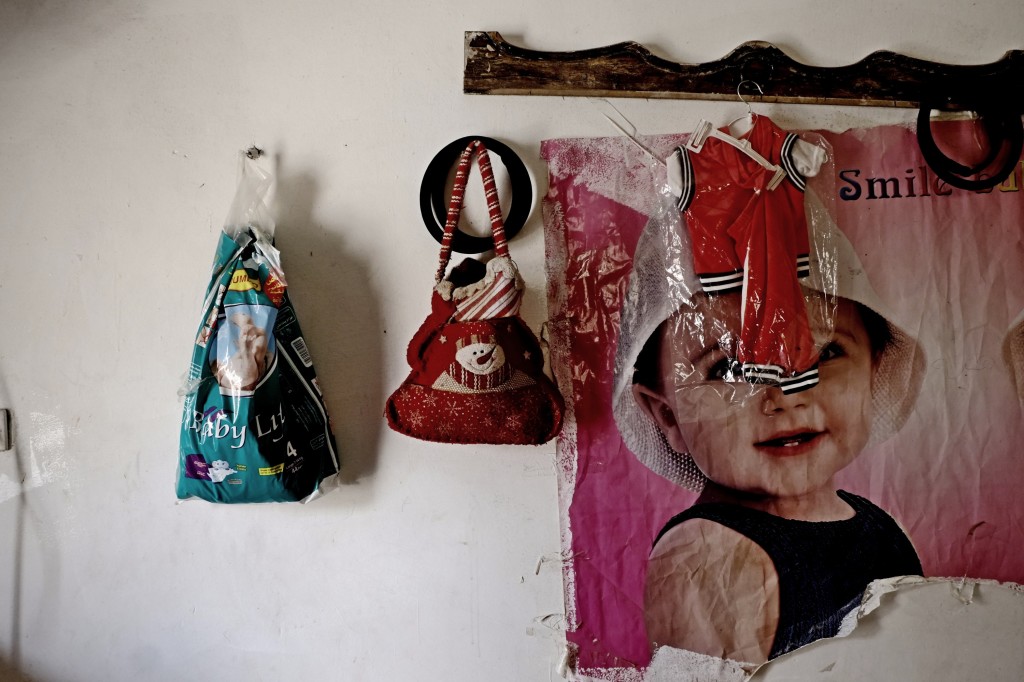
Pannolini e vestiti donati dai vicini di casa per Kalihli, il figlio di Ibrahim
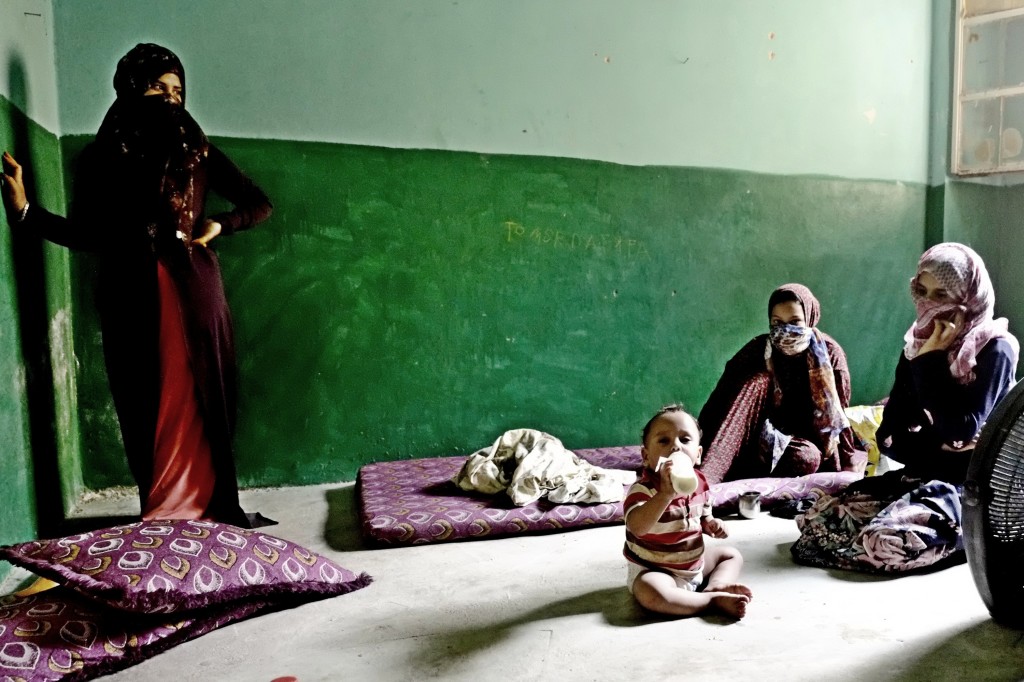
Ojeba e Sherfa, figlie di Fatima, insieme alla cognata e al nipote

Fatima è arrivata nel 2013 dal Golan; nella guerra ha perso 3 figli e il marito
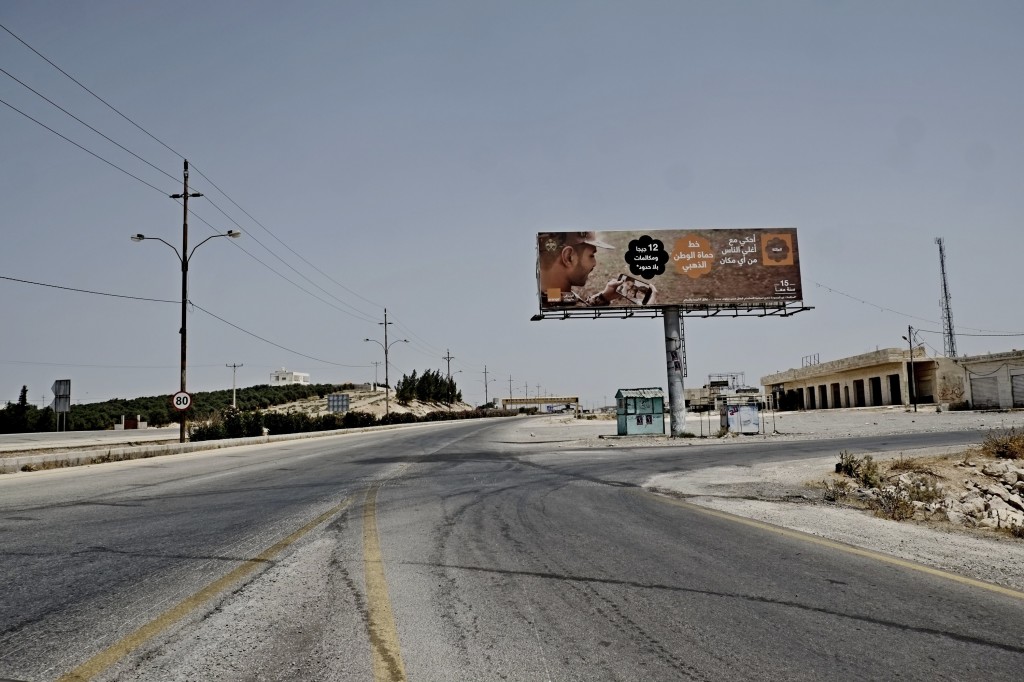
Il confine con la Siria, oggi completamente chiuso

Sali con i suoi quattro figli; vengono da Bab Omar, quartiere di Homs raso quasi completamente al suolo

Salah, il figlio più piccolo di Sali, cammina nel salotto di casa

Fratello maggiore di Salah
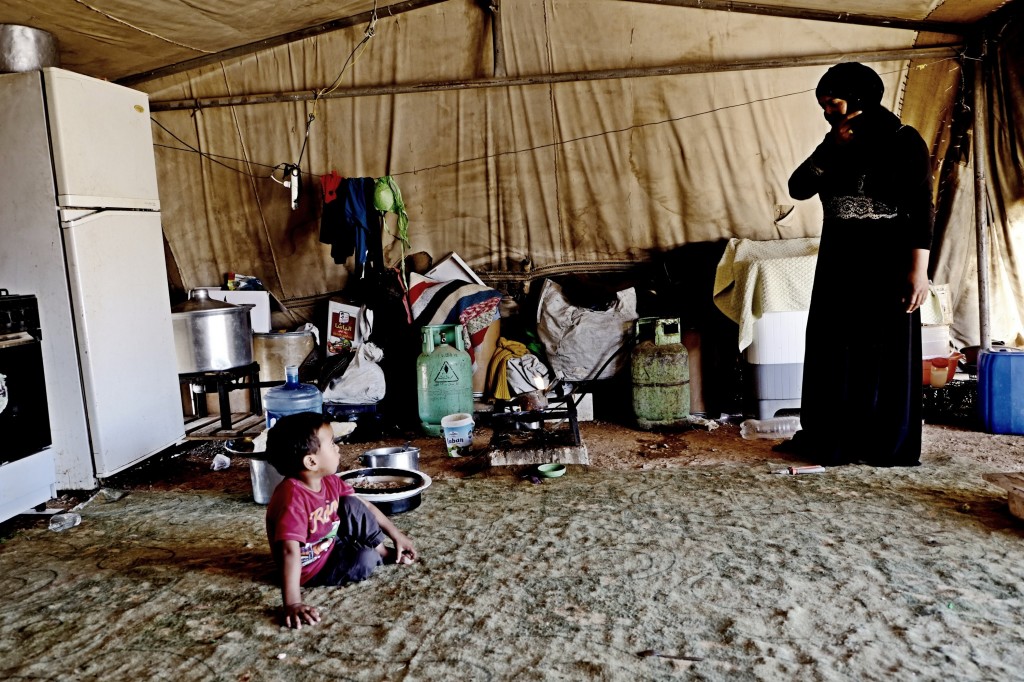
Cucina della tenda di Hassna

Famiglia di Hassna; da quattro anni vivono in una tenda nella periferia di Mafraq

Interno della tenda dove vive Hassna con altre sedici persone; si intravede il simbolo dell’UNHCR, l’alto commissariato delle Nazioni Unite per i Rifugiati

Muna. “Quando l’acchiappa zanzare fa bum”, dice Suad, madre di Muna, “i bambini si spaventano, pensano che sia una bomba”

Cucina di Amal
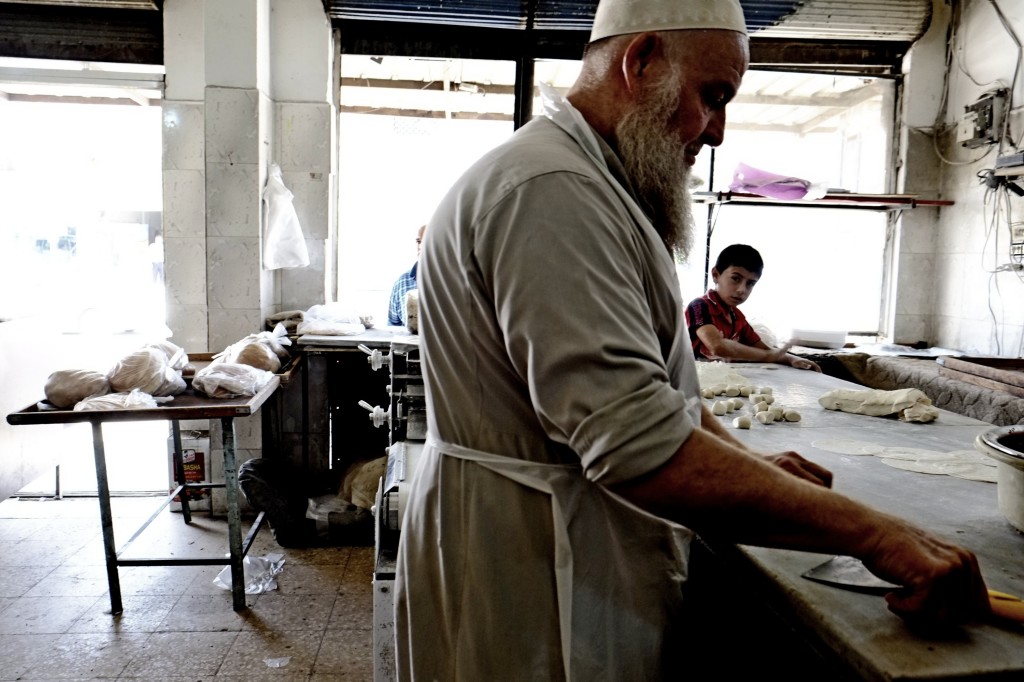
Husaam in Siria era proprietario di una grande panetteria; ha riaperto l’attività a Mafraq, lavora insieme ai due figli più giovani
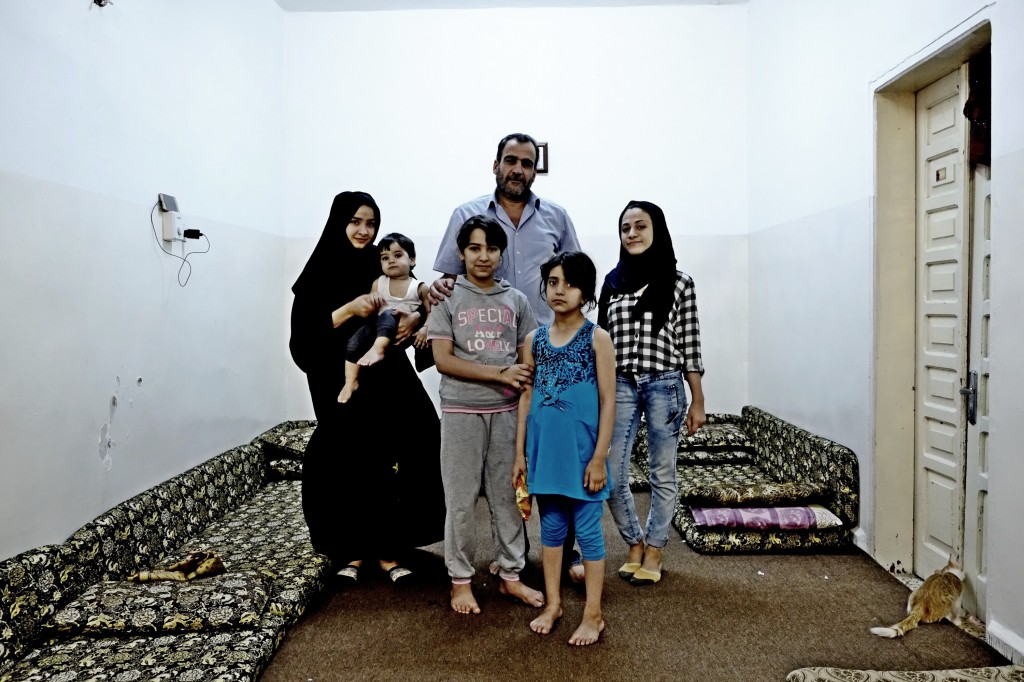
Ahmed insieme alla famiglia. Ahmed lavorava in una fabbrica statale di tessuti; è dovuto scappare da Damasco quando ha trovato in un deposito alcune armi chimiche del governo siriano
All Images © 2017 Simone Margelli